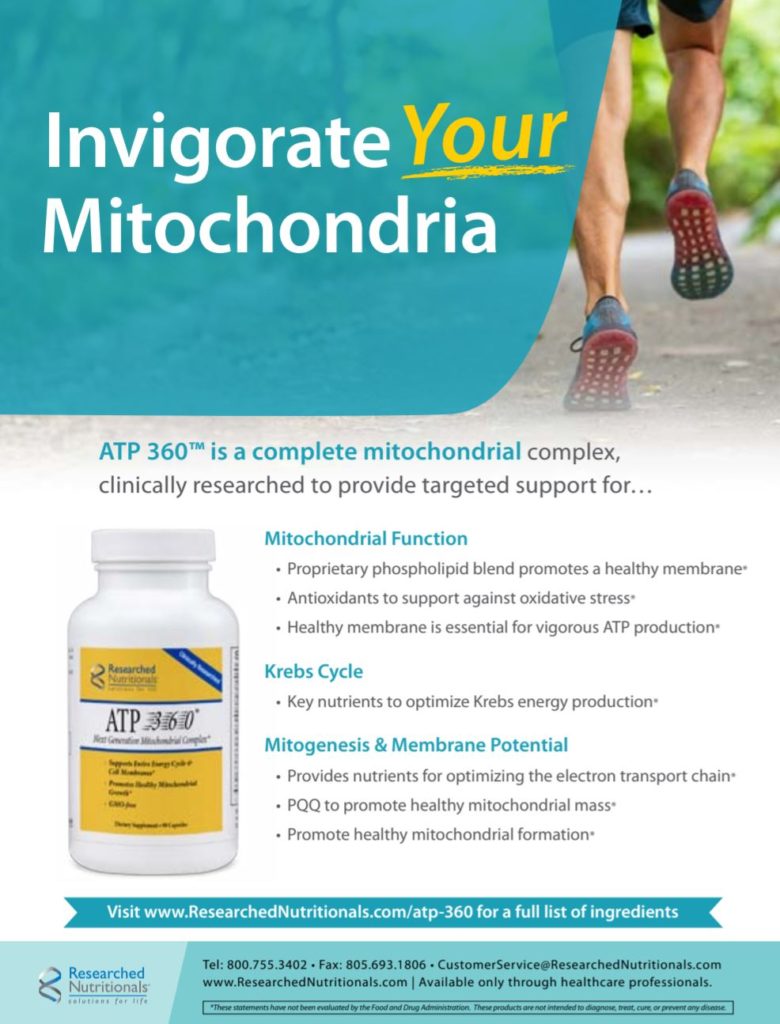By Cristiana Paul, MS1; David M. Brady, ND, DC, CCN, DACBN, IFMCP, FACN2; and Barrie Tan, PhD3
Introduction
There are inherent physiological challenges associated with oral supplementation with CoQ10, both in the ubiquinol and ubiquinone forms, which appear to limit the clinical efficacy and outcomes of this popular intervention. These challenges and limitations will be discussed in this article, along with a novel solution in the form of the molecule, likely new to many readers, geranylgeraniol (GG), now available as a nutritional ingredient commercially for the first time.
Main Takeaways
- Mitochondrial function and tissue content of CoQ10 start declining significantly in the middle-age adult. For individuals aged 60 years-of-age or older, CoQ10 contents of various tissues may be 17-83% lower than those in young adults. Supplementation with ubiquinol in combination with GG has the potential to improve mitochondrial function and raise intra-cellular levels of CoQ10 close to those observed at age 20.
- CoQ10 occurs in all body cells as ubiquinol and ubiquinone, which continuously interconvert into each other. Ubiquinol acts as an antioxidant, ubiquinone as an energy cofactor, while both affect gene expression, support DNA repair, may reduce DNA damage, as well as other functions (see Table 1a and 1b)
- Supplementation with 100-3000 mg CoQ10 was able to raise plasma CoQ10 levels as high as eight times, but intracellular content of CoQ10 was not increased enough to maximize its clinical potential. This is due to CoQ10’s low GI absorption and limited transport inside cells and mitochondria.
- GG’s molecular weight is one third of CoQ10’s and therefore, diffuses easily inside cells and organelles. GG provides a promising approach to raising intracellular levels of CoQ10.
- GG supplementation boosts synthesis of essential cell signaling molecules not achieved by CoQ10 supplementation.
- Supplementation with CoQ10 and GG increase the rate of mitochondrial oxygen consumption and thermogenesis, which may boost energy expenditure and physiological performance.
- GG supplementation mitigates many of the side-effects of statins and bisphosphonates, which affect mitochondrial functions and cellular health. This is evidenced in muscle, brain, immune cells, reproductive organs, bone, and arteries.
Raising CoQ10 Levels

Raising intra-mitochondrial levels of CoQ10 may reverse aspects of age-related mitochondrial dysfunction.Age-related decline in health and function has been attributed, at least in part, to the progressive loss of mitochondrial function, and accumulation of DNA damage. Cumulative reactive oxygen species (ROS) exposure, inadequate antioxidant protection from low levels of intracellular CoQ10, and inefficient DNA repair are some of the causes that lead to DNA mutations. These, in turn, are translated into mitochondrial proteins that may perform with lower efficiency, sometimes resulting in excess ROS. The additional ROS accelerates the rate of DNA damage, creating a vicious cycle of accelerated aging.1,2 CoQ10’s roles of antioxidant, cofactor in the mitochondrial production of ATP, and enhancement of DNA repair make it extremely relevant to anti-aging interventions.2-8
Mitochondrial dysfunction results in reduction of the rate of oxygen consumption (also called mitochondrial respiration) and increased levels of lactic acid. One study estimated the decline in oxygen consumption for every decade in skin fibroblasts at 10% (see Figure 1a).9 A second study observed a 22% decrease in mitochondrial membrane potential and a 17% increase in glucose diverted to lactic acid in skin cells from older subjects (61-73-year-olds) compared to younger ones (19-37-year-olds).10 Both of these studies showed that supplementing cells with CoQ10 was able to partially correct markers of mitochondrial dysfunction. Figure 1b shows that in-vitro cell supplementation with 100 μmol CoQ10 in a solubilized form was able to bring up mitochondrial respiration level in cells from 40-80-year-old subjects close to those from individuals in their late 20s. This effect was observed in some but not all the subjects, pointing to other factors involved.9
In another study, a topical application of a 0.01% CoQ10 emulsified in a skin cream for seven days, resulted in an increase of 44% in mitochondrial membrane potential, thus more than counteracting the age-related decline of 22%.10
These studies suggest that part of the age-related mitochondrial dysfunction may be attributed to insufficient intracellular COQ10, which is corroborated by its known involvement as a critical component in the electron transport chain. They also showed that age-related decline in mitochondrial respiration and mitochondrial membrane potential may be completely reversed, at least in some of the subjects, with CoQ10 supplementation that ensures delivery inside cells.
However, these effects have not been obtained, to the same extent, with oral CoQ10 supplementation. Geranylgeraniol (GG), a naturally occurring compound, has the potential to complement and overcome oral CoQ10 supplementation limitations, as discussed below.







